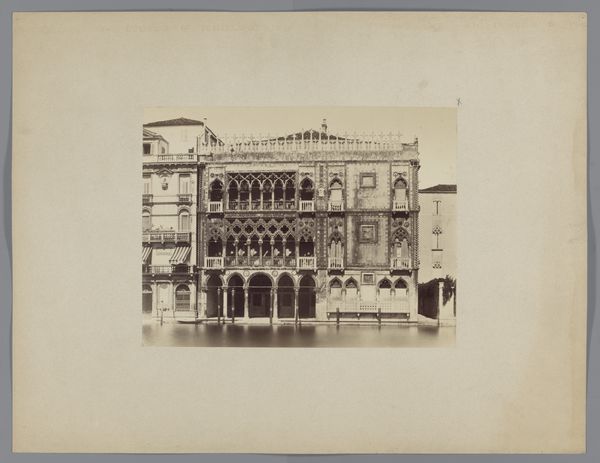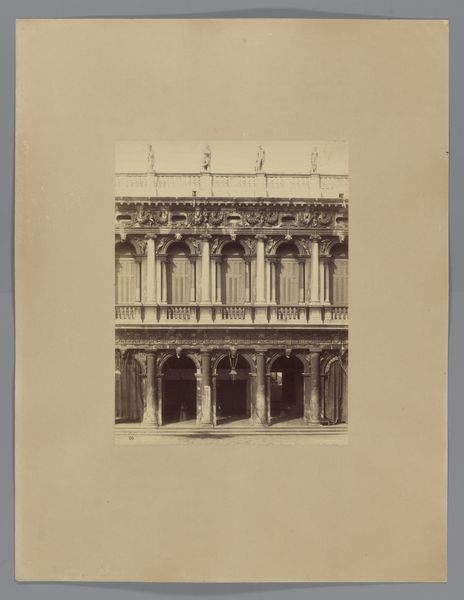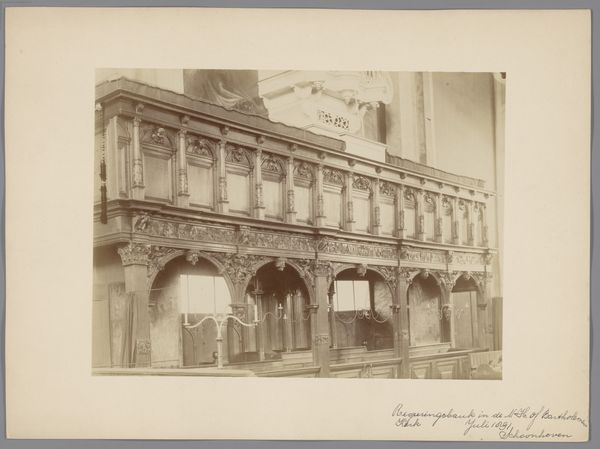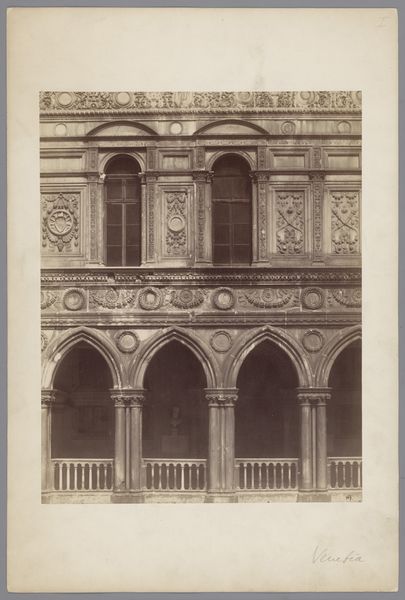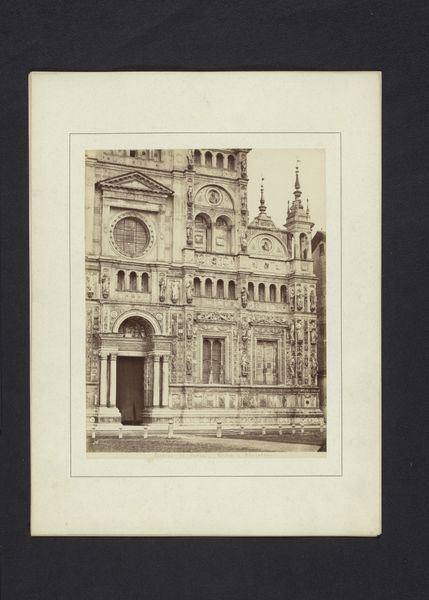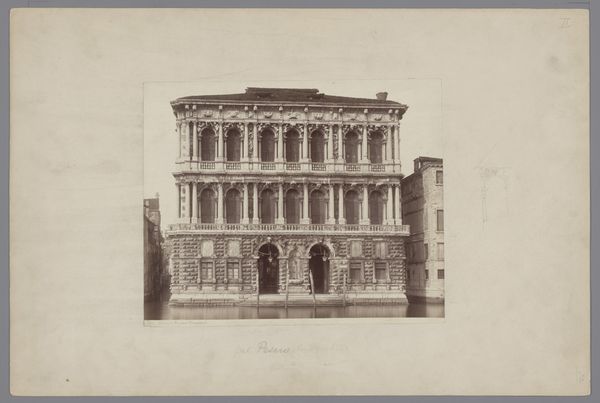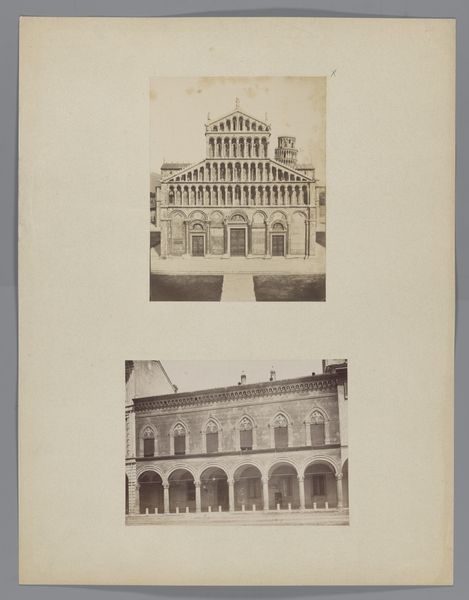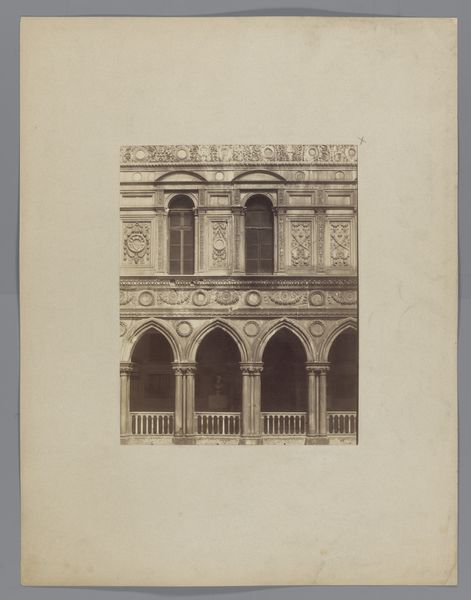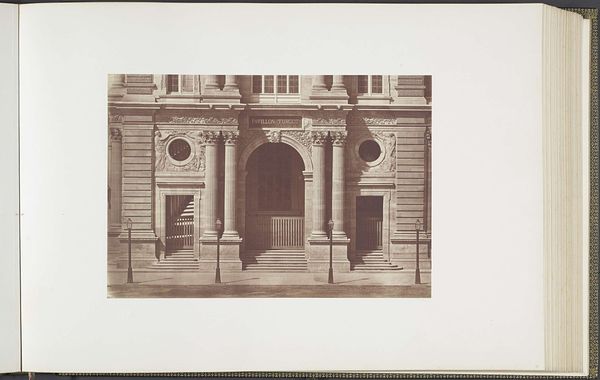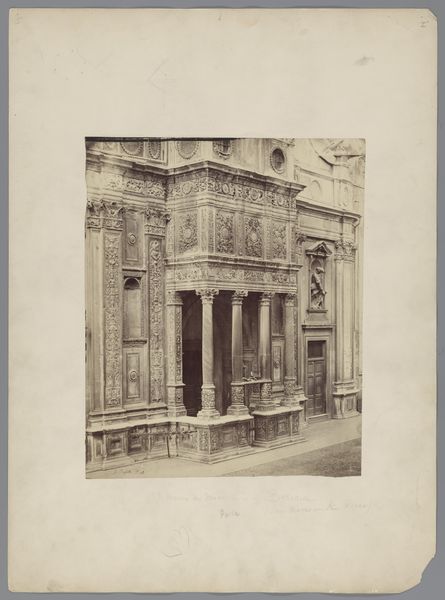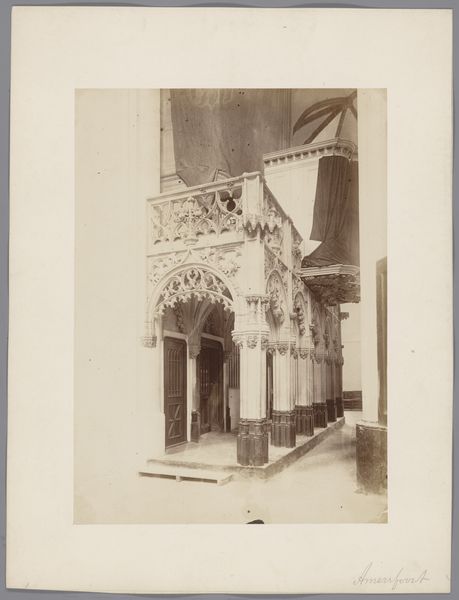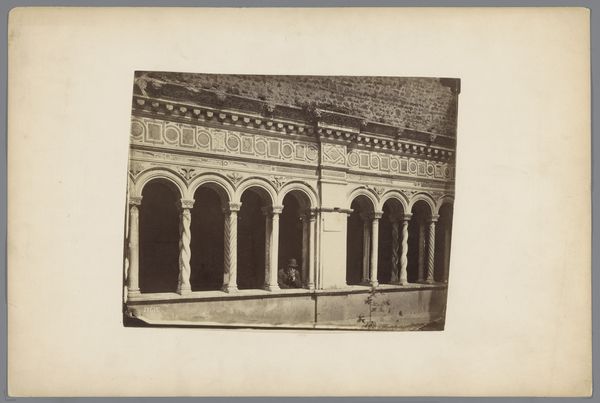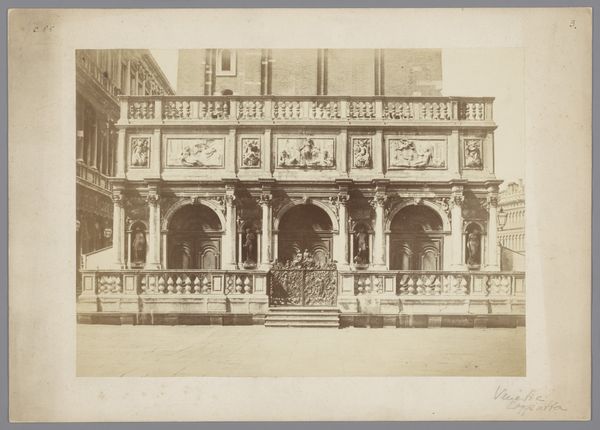
Dimensions: height 319 mm, width 480 mm
Copyright: Rijks Museum: Open Domain
Editor: Here we have Giorgio Sommer’s gelatin silver print, "Gezicht op Palazzo Cà d'Oro te Venetië, Italië", placing its creation somewhere between 1857 and 1914. It feels quite formal, almost like a document. What can you tell me about it? Curator: This image resonates deeply within the complicated narrative of Venetian history. While ostensibly a straightforward architectural study, it serves as a potent reminder of Venice's fraught relationship with tourism and its own constructed identity. Think about who was commissioning and consuming images like this in the late 19th century. Editor: Wealthy travelers, probably? Curator: Precisely. These photographs were circulated widely, cementing a particular vision of Venice as a romantic, almost theatrical backdrop for the elite. The Cà d'Oro, once a symbol of mercantile power, becomes a visual commodity itself. Consider how that commodification intersects with the lives of ordinary Venetians at the time. How were they affected? Did they have access to or agency in this representation? Editor: That’s an interesting point. I hadn't considered the potential exploitation inherent in turning a city into a picture postcard. Curator: Sommer's photograph isn't simply a neutral record. It participates in the act of defining, and perhaps limiting, Venice's cultural significance for a global audience. Understanding this interplay of power, representation, and historical context adds crucial layers to how we perceive this seemingly straightforward image. So, is this photography supporting or undermining Venice's identity? Editor: I see now that it is not a benign record; it perpetuates specific narratives. Thanks, that definitely broadened my perspective.
Comments
No comments
Be the first to comment and join the conversation on the ultimate creative platform.
